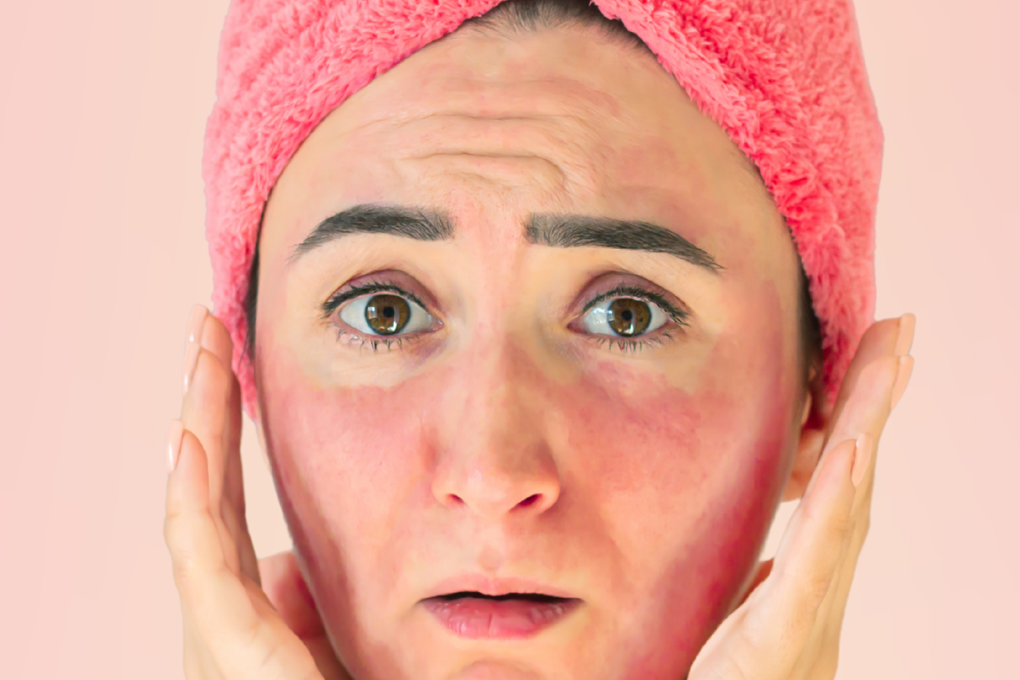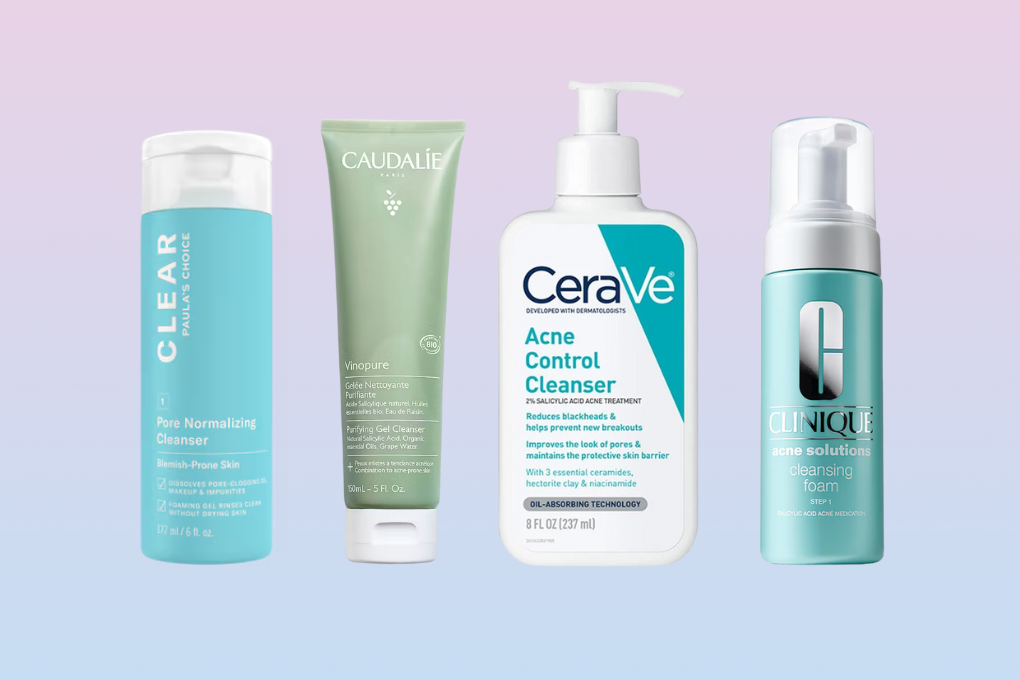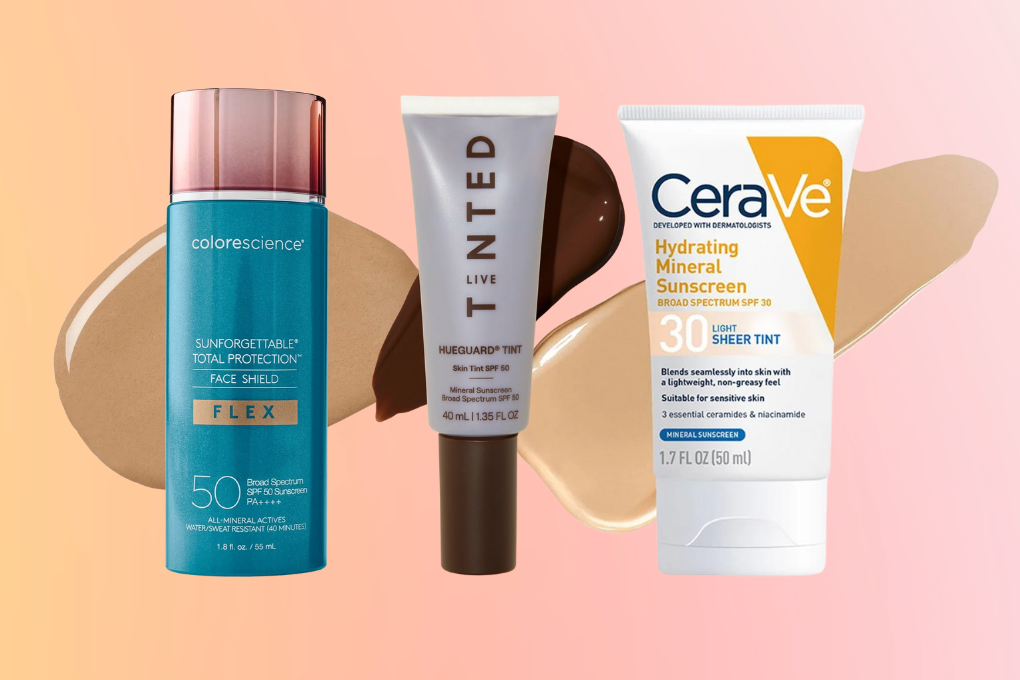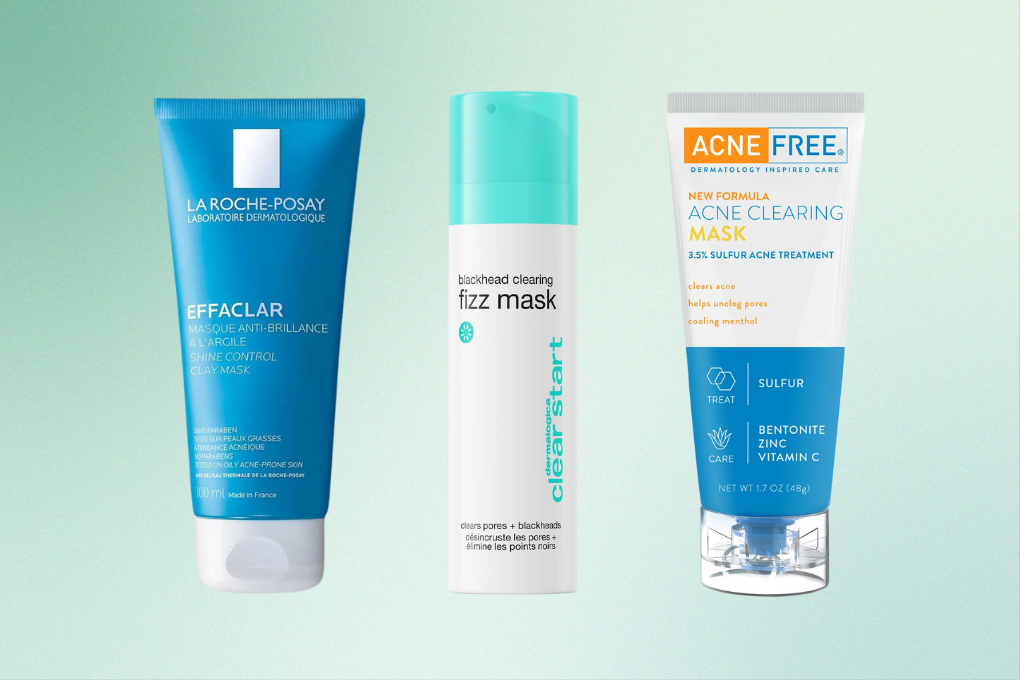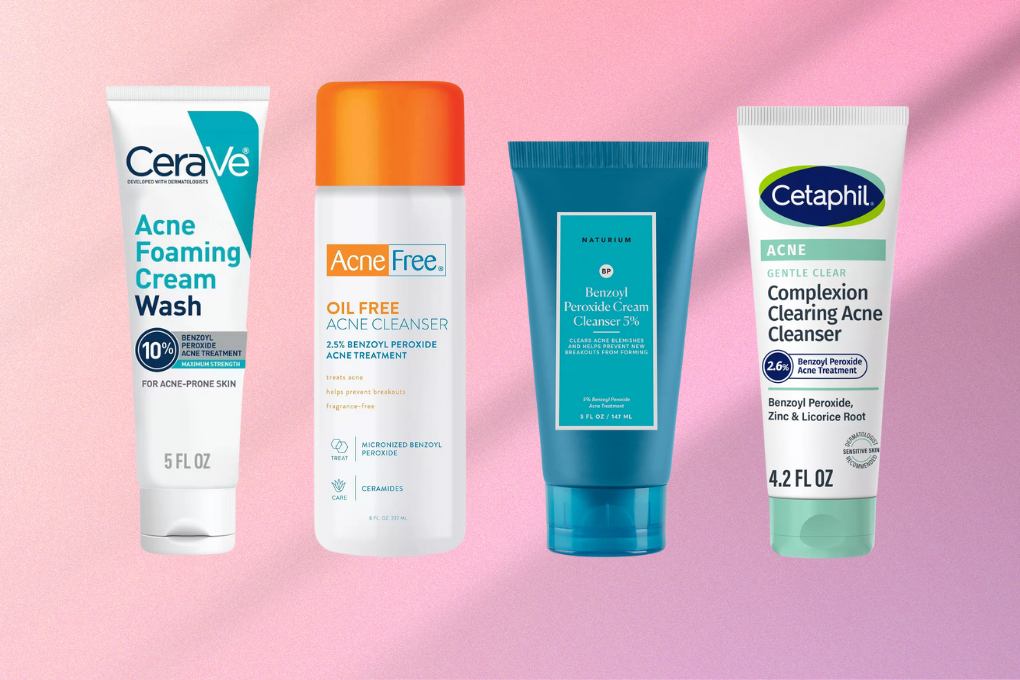If you have been looking into topical acne treatments, you’ve probably seen a lot about different forms of retinoids.
Topical retinoids for acne have been proven to be effective and are often the first line of treatment prescribed by dermatologists. However, the world of retinoids can be confusing, with many similar sounding names.
If you struggle to know the difference between retinoids, retinol, retinal, retinyl esters, retinoic acid, and Retin-A, this guide to topical retinoids for acne will help clarify the types of retinoids and explain how they work.
What Are Retinoids?
Retinoid is the overarching term for all the active ingredients derived from vitamin A that are proven to play an important role in the health and function of the skin. Different forms of retinoids are widely used in skincare products and treatments, available both over the counter or by prescription. They bind to retinoid receptors in your skin which can promote skin cell turnover, stimulate collagen production, and regulate various skin processes.
How Do Retinoids Work?
When a retinoid is applied to the skin, it needs to penetrate the outer layer of the skin, called the stratum corneum, to reach the deeper layers where it works by binding to retinoid receptors. Once it binds to receptors, it sets off a series of reactions and signals which helps control how certain genes in the skin cells work. By regulating these genes, retinoids can increase the turnover of skin cells.
There are four generations of topical retinoids that each work a little differently:
- First generation (retinol, retinaldehyde, and tretinoin): First-generation retinoids are the oldest and most well studied. Once inside the skin, these retinoids undergo a process where they are changed into their active form called retinoic acid. While retinol will have to convert to retinaldehyde (also called retinal) which will then convert to retinoic acid, tretinoin (also known by the brand name Retin-A) is already available as retinoic acid, making it the most potent. Retinoic acid is not selective and binds to all three types of retinoid receptors in the skin. Isotretinoin, commonly known as Accutane, is also a first generation retinoid, but it is an oral medication.
- Second generation: The second generation of retinoids is more potent and more irritating. This generation does not matter for us because there are currently no second-generation topical retinoids available.
- Third generation (adapalene and tazarotene): Third-generation retinoids are sometimes called synthetic retinoids and do not need to convert to retinoic acid to be active. They are made to be more selective than first and second generation retinoids by primarily using two types of retinoid receptors in the skin. This means that they can have fewer side effects and are more effective in treating certain skin conditions.
- Fourth generation (trifarotene): The fourth generation of retinoids is trifarotene, the newest type of topical synthetic retinoid. Similar to the third generation, the fourth generation of retinoids also does not convert to retinoic acid and is designed to only be selective for one retinoid receptor in the skin, making it more targeted with less irritation. It is also approved for truncal acne, meaning it can be safely used over larger areas of the body.
How Do Topical Retinoids Help Acne?
The increased cell turnover caused by retinoids means that older skin cells are shed more quickly, allowing newer, healthier cells to surface. Retinoids push this process along by loosening the bonds between skin cells, making it easier for dead cells that can block pores to be sloughed off, which can help acne-prone skin by unclogging pores that lead to breakouts.
In addition to clearing your pores through increased skin cell turnover, retinoids can help regulate the production of sebum, the oily substance produced by the sebaceous glands that can contribute to acne when produced in excess. Less sebum will help to prevent the formation of new acne lesions.
Retinoids also have an anti-inflammatory effect on the skin which can help reduce the redness and swelling that comes from more inflammatory acne.
Prescription Topical Retinoids for Acne
Prescription retinoids are generally stronger than what is available over the counter. There are four types of topical retinoids that can be prescribed by your dermatologist:
Tretinoin (Brand Name: Retin-A)
Often referred to by its brand name Retin-A, tretinoin is the topical form of retinoic acid. It is a first-generation retinoid, and it was the first topical retinoid approved to treat acne by the Food and Drug Administration (FDA) in 1971. It was later approved to treat signs of aging and sun damage in 1995.
Tretinoin is still a commonly used prescription retinoid for acne treatment. Tretinoin is not photostable, so it should only be used at night in order to get the full effect. You can get tretinoin in strengths ranging from 0.025-0.1% and it comes in four forms:
- Gel: The gel form of tretinoin is lightweight and dries down quickly. It can work well on oily skin, however it can be extra irritating for sensitive skin.
- Cream: A cream is a commonly used base for tretinoin. It is more soothing than the gel form and is better tolerated by sensitive skin, but some of the moisturizing ingredients in the cream can be too thick for oilier skin types.
- Lotion: Tretinoin in a moisturizing lotion base is made under the brand Altreno. This is a new tretinoin option, and there is currently no generic option, so even if you have health insurance, Altreno may not be covered.
- Microsphere: The microsphere form of tretinoin (brand name Retin-A Micro) is a gel-like base that is designed to provide a controlled release of the retinoic acid over time. Microspheres are tiny, spherical particles that encapsulate the retinoic acid and gradually break down, releasing onto the skin over time rather than all at once. If you have trouble tolerating the traditional forms of tretinoin, the microsphere version might be more gentle. However, if it is not covered by your health insurance it can often be more expensive than traditional tretinoin.
Tazarotene (Brand Name: Tazorac)
Tazarotene is a third-generation topical retinoid that is used to treat acne by prescription that was first approved in 1997. Tazarotene is generally considered to be more potent than tretinoin, which may make it more effective for certain cases of severe acne. For this same reason, it comes with a higher likelihood of skin irritation.
Tazarotene is used to treat acne at up to 0.1% strength, and comes in four bases:
- Gel: Similar to tretinoin, the gel form of tazarotene is lightweight and is better for oily and less sensitive skin.
- Cream: The cream formula of tazarotene is a moisturizing base which can be more soothing, especially for sensitive skin.
- Foam: The foam version of tazarotene is an aerosol foam with brand name Fabior that is pumped out and applied to skin.
- Lotion: The lotion form of tazarotene is sold under the brand name Arazlo in 0.045% strength.
Adapalene (Brand Name: Differin)
Adapalene is another third-generation topical retinoid. It was approved for acne by the FDA in 1996. It is available by prescription in a 0.3% strength gel, and it can be bought over the counter without a prescription at 0.1% strength.
Adapalene is more photostable than tretinoin and tazarotene, so it will not break down as easily in direct sunlight. It is considered the least irritating of prescription retinoids, so it’s a great topical retinoid for acne to start with if you are concerned about your skin’s sensitivity.
Trifarotene (Brand Name: Aklief)
Trifarotene is a fourth-generation retinoid approved for face and body acne in 2019 for ages nine and up. As it is targeted to only one type of retinoid receptor, it is considered to have less potential for irritation.
Trifarotene is only available as the brand Aklief in a cream form at 0.005% strength. As there is currently no generic option for trifarotene, it may not be covered by your health insurance.
Over the Counter Topical Retinoids for Acne
If you are unable to get a prescription retinoid for your acne, or if you would like to try a more mild version of a retinoid, there are several topical retinoids for acne options available over the counter:
Adapalene (0.1% Strength)
Adapalene (brand name Differin) was previously available only by prescription, but it was approved by the FDA in 2016 for over-the-counter use at 0.1% strength, making it the first over-the-counter retinoid approved to treat acne.
You can find it in a gel form to treat acne. Adapalene is the strongest retinoid you can get without a prescription, and it is a good choice if you are unable to see a dermatologist or want to begin with a gentler retinoid for acne.
La Roche-Posay Effaclar Adapalene Gel 0.1% Treatment
- Maximum over-the-counter strength
- Non-greasy gel-like texture
- HSA and FSA eligible
- Expensive
Retinoic Acid Esters
These newer over-the-counter retinoids called retinyl retinoate and hydroxypinacolone retinoate (HPR) are esterified forms of retinoic acid. When applied to the skin, retinyl retinoate converts partly to retinoic acid and partly to retinol, whereas HPR does not convert to retinoic acid but is instead able to bind directly to the retinoid receptors in the skin.
Because they are newer and less studied, these products are currently less commercially available. HPR is also known in products as granactive retinoid, which is a brand name for a solution made of 90% solvent and 10% HPR, so the percentages of the active ingredient HPR will be 10% of what is advertised as the granactive retinoid strength. For example, a product with 5% granactive retinoid will have 0.5% HPR in it.
The Ordinary Granactive Retinoid 2% Emulsion Next Generation Retinol with 0.2% HPR
Acure Radically Rejuvenating Retinoid Night Complex with 0.2% HPR Retinoid
Retinaldehyde (Retinal)
Retinaldehyde, also known as retinal, is increasingly available in over the counter products such as serums and creams in up to 0.1% strength.
Retinaldehyde is more potent than its sibling retinol because it only needs to go through one conversion to become retinoic acid and bind to skin receptors, making retinaldehyde the strongest first-generation retinoid you can get without a prescription.
The Ordinary Retinal 0.2% Emulsion High-Strength Stabilized Retinaldehyde Serum
- Retinaldehyde is a strong over-the-counter retinoid
- Airless pump to protect formula
- Light creamy serum texture
- Small amount
- Yellow hue can rub off on light fabrics
Retinol
Retinol is a very common ingredient in over the counter products that are marketed for anti-aging. You can find retinol in serums, moisturizers, and even body lotions. Once applied to the skin, retinol has to convert to retinaldehyde and then to retinoic acid, making it weaker than retinaldehyde. You can get retinol in up to 1% strength in over the counter products.
CeraVe Anti Aging Retinol Cream Serum with Hyaluronic Acid and Ceramides
Retinyl Esters
Retinyl esters are a milder form of retinoids that are often used in skincare products. These esters, such as retinyl palmitate and retinyl acetate, are first converted to retinol, then from retinol to retinaldehyde, and then from retinaldehyde to retinoic acid in the skin. Because they have to go through these conversions they are less effective, but they provide a gentler approach to retinoid use, making them suitable for individuals with sensitive skin or those new to retinoid products.
While retinyl esters may have some skin benefits, they will probably not be strong enough to notice a difference in most cases of acne.
The Side Effects of Retinoids
Retinoids are renowned for being irritating to the skin. They can cause redness, peeling, and a stinging sensation, and can increase your sensitivity to sunlight. Be sure to use sun protection. It is important to start slowly with retinoids and only use gentle products in the rest of your skin care routine to protect your skin and build its tolerance to avoid the irritation and potentially damaging your skin barrier.
You may have heard the term “retinoid uglies” to describe the purging period that can sometimes happen when the increased skin turnover temporarily brings more breakouts to the surface. While it can be disheartening to feel like your acne is getting worse, keep in mind that it really is improving. These are breakouts that you would have had to deal with eventually—you are just getting them out of the way faster.
How Long Do Retinoids Take to Work?
The time it takes for retinoids to be effective on acne depends on the condition of your skin to begin with, as well as the type of retinoid and strength that you are using. With that said, you should usually start to see improvement at around the three month mark. Because retinoids work to change how your skin cells turnover, it does take a while to see the full benefit.
It can be difficult to be patient for your retinoid to work while your skin continues to break out and on top of that you might have extra dryness or irritation to deal with while you adjust. Just know that this is the normal process for how retinoids clear the skin. While you wait try to focus your attention on reducing the side effects of retinoids by using a gentle cleanser and a good moisturizer. Retinoids can usually be used long term, so adjusting to them should be viewed as a marathon and not a sprint.
Depending on your specific case of acne, your dermatologist may also prescribe oral antibiotics along with a retinoid to kickstart the process. If you have hormonal acne, your dermatologist might recommend hormonal treatment like spironolactone or hormonal birth control along with your retinoid to tackle acne. For severe cases such as cystic acne, your dermatologist may find that you’re a better candidate to start with the oral retinoid isotretinoin, also known as Accutane, and perhaps use topical retinoids after if needed.
When Should You Start Using Topical Retinoids for Acne?
When over-the-counter acne face washes and creams that use benzoyl peroxide and salicylic acid aren’t enough to keep your skin clear, you should start looking into trying a retinoid as long as you aren’t pregnant as there are no retinoids that are considered safe for pregnancy.
In addition to clearing acne, retinoids, particularly tretinoin, have been proven to reduce wrinkles and signs of photoaging. Starting retinoid use earlier can give you these long term skin benefits in addition to clearing acne, so as long as your skin can tolerate it, there’s no reason to wait!
The use of topical retinoids for acne should be done under the guidance of a healthcare professional or dermatologist. They can assess your skin concerns, medical history, and provide tailored recommendations for the most appropriate retinoid treatment.















